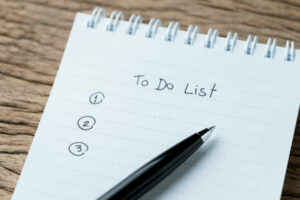What do PR and Halloween have in common? They can both be scary as well as fun. Here’s what I mean.
Planning is the key to both
Ever wait for the last minute to plan your costume and feel like a loser at the party? It’s the same way in public relations. For fans of Halloween the planning starts weeks or even months in advance. There’s thought and research put into the ideal costume, candy, décor and celebration. There’s even healthy competition in the suburbs around who can have the most ghoulish yard decorations! In PR, we spend time planning before the “fun” part happens, too. Those plans may be for 90 days to six months, complete with realistic KIPs, media expectations, and outcomes. (Check out some more ways to create that PR plan in this post.) Then we’re ready to dive in and make things happen. Later, we celebrate success.

Group efforts make the party
At Crenshaw, we pride ourselves on a company culture that recognizes each person’s successes. We work through things as a team, much like group costumes where everyone has an individual look but together they make up an idea or team, like a LaCroix package or the cast from Schitt’s Creek. Similarly, we hold each other up in public relations. In a pre-COVID office, we could even shout out a question and get multiple suggestions on how to solve the issue. It’s corny to say we have the best team in PR but everyone knows when they walk in the door they are part of an amazing group. Even during these past few months of WFH, we always know our team is just a Slack or Zoom call away.

PR pros often wear lots of hats….or costumes
During my time in PR, I’ve worked on many different accounts in all different industries – ad tech, retail, cybersecurity, consumer tech, the list goes on. There were days where accounts across the board had major announcements happening, making me feel like I was changing costumes all day depending on what I was doing. Sometimes walking into the office, you never know what ‘costume’ you’ll be wearing. You could be moderating a media interview, holding media training for a CEO, or manning a check-in table at a panel event. Just like for Halloween, we pull out ideas or tricks on a moment’s notice.

We get very crafty
Some of my favorite costumes were the ones that were homemade and had a lot of thought and time behind them. PR pros are very creative and have the skills to take something bland and make it exciting and relevant. One of our former clients was an emergency “panic button” marketed to women, college students, and runners. After successfully securing reviews in many major consumer tech pubs, our team hit a roadblock – what now? To gain more traction around the importance of being safe when running, we took advantage of Daylight Saving Time. We developed a DST-themed survey and pitched the exclusive to women’s health and fitness publications. Through our creativity we secured an exclusive in Women’s Running Magazine that sparked national TV segments. Without creative thinking, it would have never happened.

Some tricks, hopefully lots of treats!
One of my favorite parts of PR are the tricks and treats. There are some days where we feel like nothing can go our way. Ask anyone in the business, and they’ll have horror stories about disastrous media events, missed opportunities, or scary clients. Then there are the treats. There is no better feeling than being praised by your boss and colleagues for a job well done, or getting a positive email from someone who is usually hard to please. These little moments of praise and treats remind us why we love working in PR.

Happy Halloween! Hope your day is filled with lots of PR treats!




